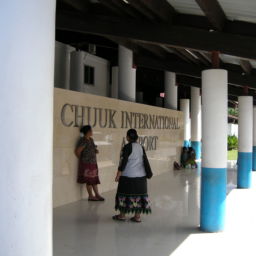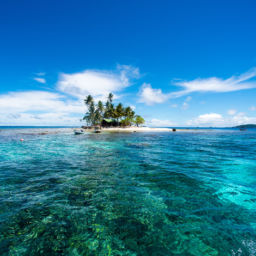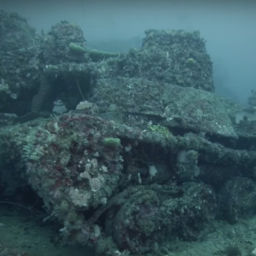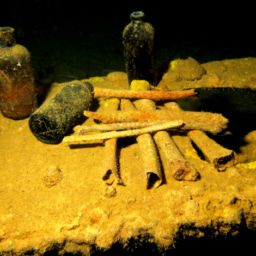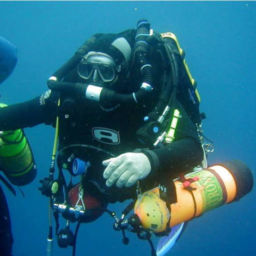Every year, thousands of divers flock to a remote area of the central Pacific known as Chuuk Lagoon. Situated in the midst of Micronesia, the lagoon is home to the world’s largest ghost fleet, and as such has earned a reputation as the single best wreck-diving destination on the planet. Here, divers can literally immerse themselves in history and become firsthand witnesses to the destruction of World War II. Because of this, diving Chuuk Lagoon’s Ghost Fleet can be an emotional experience, particularly if divers familiarize themselves with the history before discovering it for the first time.
During World War II, the Japanese used Chuuk Lagoon, then known as Truk Lagoon, as their main base of operations in the South Pacific Theater, as its sheltered waters provided safe anchorage for the Imperial Japanese Navy’s Combined Fleet. Often referred to as the Japanese equivalent to Pearl Harbor, Truk Lagoon was one of Japan’s most important logistical and operational hubs. It was also the only major Japanese airbase within range of the Marshall Islands, which were the easternmost point of the defensive barrier that Japan set up to protect itself at the beginning of the war. In early 1944, however, Japan suffered a major blow when the United States launched its Gilbert and Marshall Islands campaign and took control of several important Marshall Islands atolls. After successfully capturing Kwajalein Atoll to the southeast of the archipelago, the Americans planned to invade Eniwetok Atoll, now called Enewetak Atoll, which would provide them with the perfect base for launching an attack on the Japanese in the Mariana Islands. Before embarking on the Battle of Eniwetok, however, the Vice Admiral of the U.S. Navy knew that he would have to preempt a counter-attack from the Japanese forces anchored at nearby Truk Lagoon, and so, Operation Hailstone was born.
The Creation of Chuuk Lagoon’s Ghost Fleet
The Americans hoped to wipe out the Japanese Imperial Fleet by combining airstrikes, surface-ship actions and submarine attacks to deadly effect. A week before Operation Hailstone was due to launch, however, the Japanese moved many of their larger warships to Palau, correctly fearing that Truk Lagoon had been compromised since the American invasion of the Marshall Islands. However, the vast majority of their fleet remained at anchor in the lagoon, and when Operation Hailstone struck on February 16th, 1944, their former safe haven swiftly became a death trap. The campaign lasted for two days, and even those ships that managed to escape the lagoon eventually succumbed to cruiser gunfire or submarine attack. When Operation Hailstone concluded, the Japanese fleet had lost 16 warships, including light cruisers, destroyers, submarine tenders and an aircraft transport vessel. In the attack, 32 merchant ships also sank, and more than 250 Japanese aircraft were destroyed. Many of these ships were loaded with reinforcements and supplies destined for Japanese strongholds throughout the Pacific. The vast majority of crew and cargo went down with their vessels, and as such, the lagoon acts as the final resting place for many Japanese sailors as well their ships.
Operation Hailstone successfully decimated the base at Truk and proved to be a major turning point in World War II. Without the support of the Truk fleet, the U.S. captured Eniwetok Atoll shortly after the conclusion of the campaign. It would be just one of a long list of Pacific islands invaded by Allied forces in the last year of the war, including Guam, Palau and Iwo Jima. Truk remained isolated until Japan finally surrendered in August 1945.
Nowadays, Chuuk Lagoon’s Ghost Fleet has experienced something of a resurrection; vessels that once waged war have become sanctuaries of life. Those divers who visit the wrecks can gain a valuable insight into the past, as many of them still display the cargo that they went down with. The paraphernalia of war is everywhere in Chuuk Lagoon, from the vessels themselves to the torpedoes, tanks, engines, gas masks and more that litter their decks. To see these things firsthand is an overwhelming experience, one that highlights the horror of human conflict while also providing some fascinating, rewarding diving. Keep in mind that many of the wrecks lie below recreational limits, although there’s plenty to see on upper decks as well.


